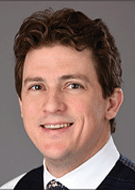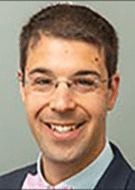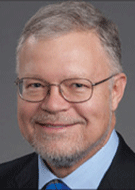Radiology Leaders Take Wellness Seriously
Maintaining well-being during trying times is challenging but essential



During these unprecedented times, the health care community — including radiologists — are undoubtedly feeling heightened levels of stress and anxiety.
Whether working from home or on the front lines of the crisis, the COVID-19 pandemic has had a significant impact on radiologists across the globe since it emerged in early 2020. Because the specialty already experiences high levels of stress and burnout, radiologists need to be especially vigilant about their own well-being and that of their colleagues, said Brandon Brown, MD, MA, a pediatric and fetal radiologist at the Indiana University School of Medicine and chair of the RSNA Professional Committee.
“Physician distress is an under-recognized problem in our day-to-day workplace,” Dr. Brown said. “Anyone in the medical community wouldn’t think twice about rushing in to help a patient who is in respiratory distress or bleeding out, but every day we go into the hospital and walk past colleagues suffering from stress and anxiety. "The work we do is challenging and it has collateral damage, Dr. Brown said, "Watching patients die, especially during the pandemic, creates emotional and psychological effects in health care providers."
And because employee well-being is rooted largely in the systemic approach to wellness taken by the organization, the entire health care system can suffer when stress and burnout threaten staff across the board, Dr. Brown said.
“If you have a hospital full of burned out, stressed and depressed health care workers, then your entire institution can be affected,” Dr. Brown said. “There’s a trickle-down effect that we ignore at our peril.”
Addressing Wellness is Urgent
But even pre-pandemic, burnout was already one of the most pressing issues facing radiology. “Historically, wellness has not been something people spoke up about,” said Michael Fishman, MD, section chief of breast imaging at Boston Medical Center. “There was an expectation in medicine that we tolerate behavior and practices not aligned with personal wellness.
In a recent RadioGraphics article, “The Road to Wellness: Engagement Strategies to Help Radiologists Achieve Joy at Work,” Dr. Fishman and colleagues reported that more than half of radiologists surveyed were experiencing symptoms related to stress and burnout. “Those numbers are still in the 50% range, especially with the impact of COVID,” he said. “As we move forward and address the fallout from this crisis, this is a critical time to address wellness.”
As stress levels have ratcheted up, the concept of well-being is coming into sharper focus at health care institutions. A successful wellness approach requires an on-going effort on every level: organizational, workplace and individual. Creating an environment of well-being involves the entire organization but is driven by leadership, Dr. Fishman said.
“There are health care leaders who understand the need and urgency to address wellness,” he said. “The ultimate goal is to create a culture of wellness that includes diversity and inclusion.”
Forming a wellness committee to develop an overall strategy and practices and policies that foster wellness is a critical step. Effective leadership drives the strategy but should also engage clinicians, patients, caregivers, administrators and other staff with a stake in the process.
“Wellness should be made a strategic imperative of your practice,” he said. “Compared with achieving goals in the strategic pillars of radiology such as education, clinical care, and research, achieving a state of wellness is equally, if not more, important.”
Dr. Fishman provides an overview of wellness activities radiologists can participate in to reduce stress:
Wellness Coaching, Curriculum
Key to well-being is adopting a “growth mindset” — a tendency to believe in personal growth — that includes tenets such as embracing imperfections, valuing the process over the result, and viewing challenges as opportunities.
“A growth mindset is one in which failure is viewed as part of the process and contributions are welcome,” Dr. Fishman said.
Dr. Fishman’s own wellness path began when he attended a symposium on emotional intelligence, motivating him to educate himself further about this and other related topics including, burnout, motivation, conflict resolution and resilience.
“I had never explored these topics before, but they really resonated with me,” Dr. Fishman said. “Some of these skills we learn in kindergarten, others take years to acquire, and some are never learned. They aren’t taught in medical school and yet they’re needed in the workplace and in life.”
Dr. Fishman went on to develop a curriculum on non-clinical skills and wellness for radiology residents while working at Beth Israel Deaconess Medical Center. After moving to Boston Medical Center, he also began pursuing training and certification in health and wellness coaching to help supplement and improve his ongoing wellness/non-clinical skills curriculum and program.
“We are the first-ever radiology department with a formal coaching program for trainees,” he said. In the program, which kicked off in 2020, 10 members of the radiology faculty went through coaching training and are now providing one-on-one coaching to two residents each.
After six months, the program will be evaluated to compare the experience of residents who were coached to those of the 20 trainees who were not coached.
“So far, our anecdotal evidence has been very positive from both coaches and trainees,” Dr. Fishman said. “Especially during a pandemic, it’s so important to connect with another person to better understand the fundamental ways we deal with the world and to set goals for improving.”
Especially in these times of strife, Dr. Brown emphasized the importance of reaching out to one another and looking out for the mental and physical well-being of co-workers.
“Now is the time to regroup and make sure we’re taking care of each other,” Dr. Brown said. “Look around and make sure the people standing shoulder-to-shoulder with us are getting the support they need."
For More Information
Access the RSNA Professionalism Vignette, “Employing Humor in the Radiology Workplace.”
Access the RadioGraphics article, “The Road to Wellness: Engagement Strategies to Help Radiologists Achieve Joy at Work.”
Read the RSNA News story, "Radiologists Need to Care for Themselves While Caring for Other During Pandemic."
Read the RSNA News story, "Creating a Culture of Wellness in Radiology."
Humor is an Effective Wellness Strategy
Among the many strategies for promoting wellness — during a pandemic or otherwise — one method recommended by experts is simple, universal and free: humor. “We’re all scared and suffering disruptions,” said John Michael Holbert, MD, professor of diagnostic radiology at Wake Forest University School of Medicine, Winston-Salem, NC.
“Humor is the highest, best defense mechanism. But it must be the right kind of humor. To illustrate how different types of humor affect our relationships and the learning process, Dr. Holbert authored an RSNA Professionalism Vignette on humor in the workplace.
The vignette outlines five scenarios on the use of humor and offers lessons for using it most effectively. Dr. Holbert credits the printed work of Ben Felson, MD, whom he calls the best-known humorist in radiology, for convincing him of the effectiveness of humor.
“In med school some of my teachers had a sense of humor and it made learning a lot easier,” Dr. Holbert said. “When I became an academic radiologist, I tried to use gentle humor where I could, to make the day a little lighter.”
Healthy Humor
Insults, sarcasm and ridicule (such as those parodied by Michael Scott in the television series, “The Office”) are considered aggressive and should be avoided in the workplace.
The same goes for self-defeating or self-destructive humor. In both of these styles, someone feels better at another person’s expense. Dr. Holbert describes two healthy styles of humor that are useful for managing stress, both of which have a calming and protective effect.
The first is affiliative humor, which includes communal joking, telling funny stories and other playful humor that creates a sense of fellowship.
The second style, self-deprecating humor, naturally improves interpersonal relationships and fellowship because it pokes fun at our own frailties and trials in a self-affirming way. “We need to recognize that we’re all in this together. Laugh about it,” he said. “To laugh is an inside hug, it changes your endorphins."